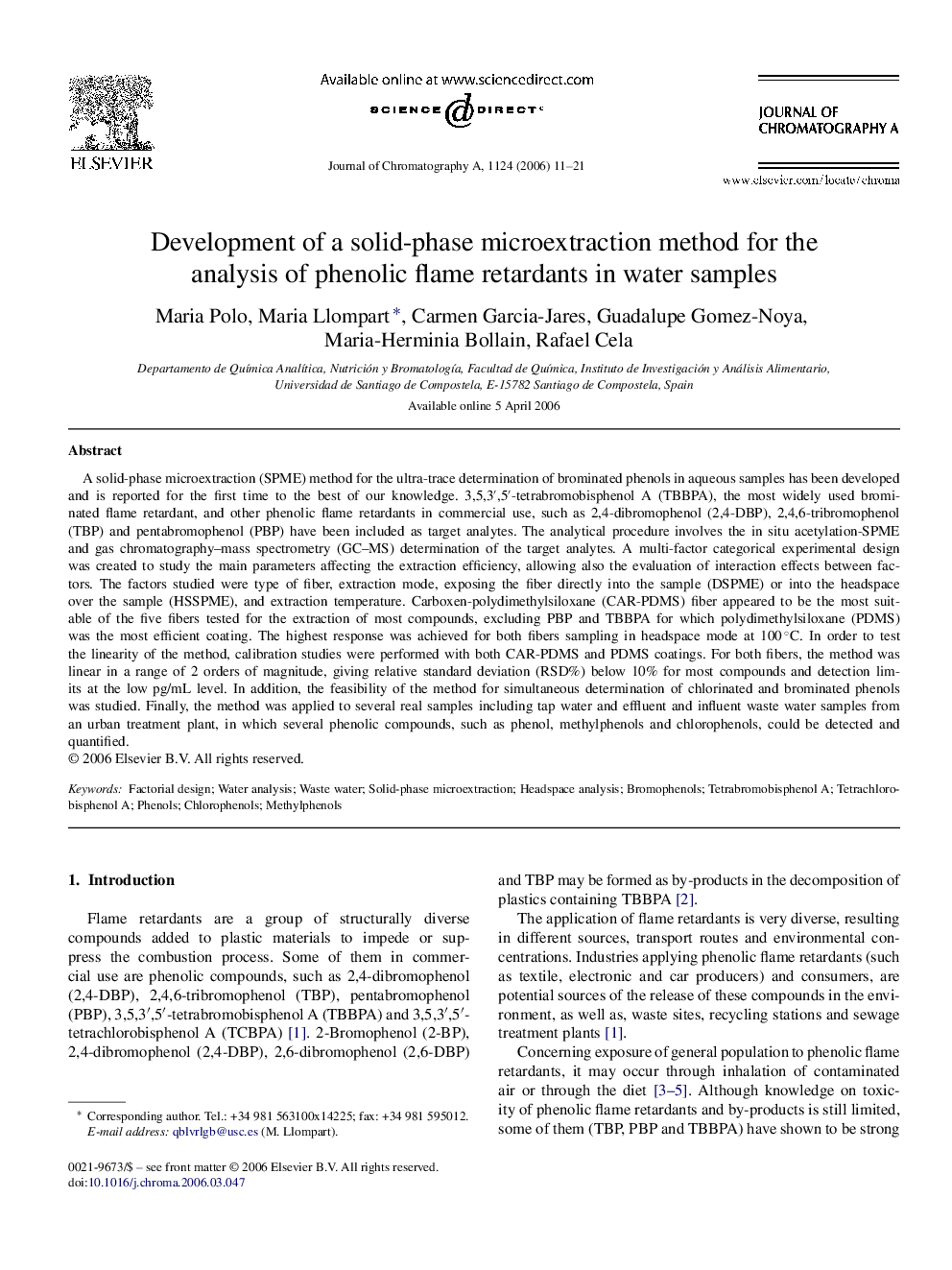| Article ID | Journal | Published Year | Pages | File Type |
|---|---|---|---|---|
| 1209988 | Journal of Chromatography A | 2006 | 11 Pages |
A solid-phase microextraction (SPME) method for the ultra-trace determination of brominated phenols in aqueous samples has been developed and is reported for the first time to the best of our knowledge. 3,5,3′,5′-tetrabromobisphenol A (TBBPA), the most widely used brominated flame retardant, and other phenolic flame retardants in commercial use, such as 2,4-dibromophenol (2,4-DBP), 2,4,6-tribromophenol (TBP) and pentabromophenol (PBP) have been included as target analytes. The analytical procedure involves the in situ acetylation-SPME and gas chromatography–mass spectrometry (GC–MS) determination of the target analytes. A multi-factor categorical experimental design was created to study the main parameters affecting the extraction efficiency, allowing also the evaluation of interaction effects between factors. The factors studied were type of fiber, extraction mode, exposing the fiber directly into the sample (DSPME) or into the headspace over the sample (HSSPME), and extraction temperature. Carboxen-polydimethylsiloxane (CAR-PDMS) fiber appeared to be the most suitable of the five fibers tested for the extraction of most compounds, excluding PBP and TBBPA for which polydimethylsiloxane (PDMS) was the most efficient coating. The highest response was achieved for both fibers sampling in headspace mode at 100 °C. In order to test the linearity of the method, calibration studies were performed with both CAR-PDMS and PDMS coatings. For both fibers, the method was linear in a range of 2 orders of magnitude, giving relative standard deviation (RSD%) below 10% for most compounds and detection limits at the low pg/mL level. In addition, the feasibility of the method for simultaneous determination of chlorinated and brominated phenols was studied. Finally, the method was applied to several real samples including tap water and effluent and influent waste water samples from an urban treatment plant, in which several phenolic compounds, such as phenol, methylphenols and chlorophenols, could be detected and quantified.
